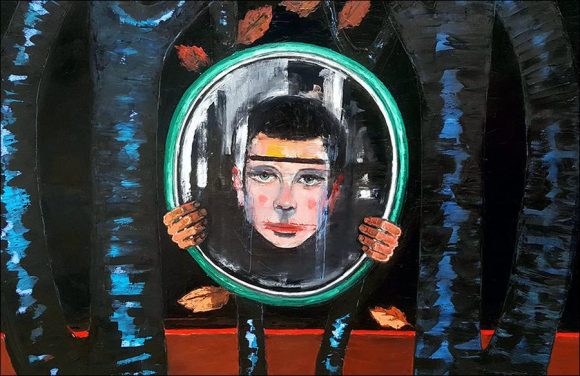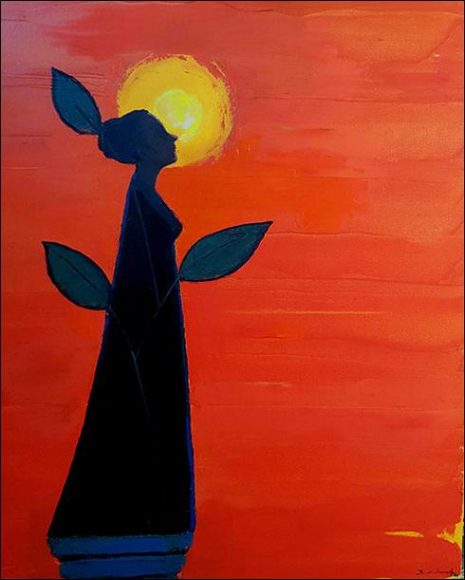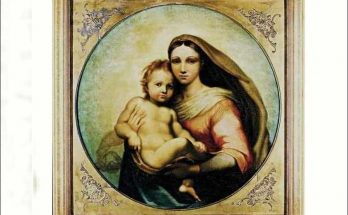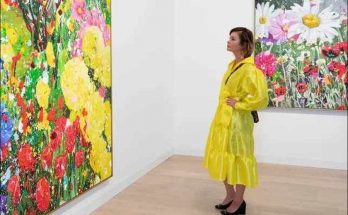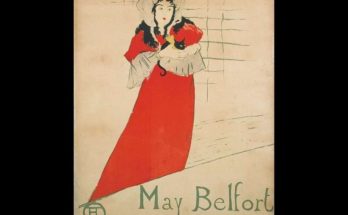Barış Cihanoğlu’s Insight exhibition opened at MAJİ Luxury Art Gallery & Event in Istanbul. We reviewed the exhibition on the production practice and works of the artist. You can visit the exhibition until February 29, 2020.
There are many different methods of reading, that is, understanding and interpreting the picture. With the formation of art history discipline, many names have been proposed by many names for hundreds of years. Looking at the lives of the artists, interpreting the subject of the work, analyzing the technique, making comparisons, prioritizing the social background.
Time criteria proved that none of these are definitive methods alone. Therefore, when it is a matter of understanding and interpreting the picture of today, and the picture of today, which is produced without giving up the formal method, the problem must be seen. To read art production, it is necessary to remember the condition of understanding the age.
The necessity of the age, even more accurately, the spirit of the age determines the look while determining the zeitgeist, contemporary – the product of that age – the artwork. This method issue is an important topic of discussion. Moreover, in a day where everything is so intertwined, connected and transitive… On the other hand, it is a fact that the object of reading brings and imposes its own method to the extent of its power.
The paintings of Barış Cihanoğlu are very strong and the productions of this artist, which I have been thinking about and written for years, never remain an passive product waiting to be read; He engages in a deep dialogue with me – with the viewer – and makes the act of reading pictures possible by destroying the object-subject distance. Epistemologically, it forces the loss of distance. The dialogue evolves into a kind of inward turn. It is not a coincidence that Cihanoğlu’s new series is called “Insight”.
Painting has become synonymous with the representation of the figure, and the representation of the figure with the expression for thousands of years. Over time, this narration has become crystallized with suffering, and with modernity leading to deep slits in society, it has turned into an expression of humanitarian anxiety, a kind of human defense.
Russian socialism in the 19th century strikes people, for example. Barış Cihanoğlu’s painting becomes distinct when he sees this striking today. The striking in question should not be understood as “shock”, which has become the dominant criterion of contemporary art. It is not a striking, like soap bubble, that stuns the audience for a moment and quickly puts him in the next shock experience; The result of a process of understanding-interpretation, made possible by the long and deep dialogue mentioned above. Cihanoğlu is doing this by turning inside.
The artist presents a world where people are leading. But his “human” is actually “humanity,” and this “starring” signifies the pain of existence rather than the applause of a show. Human stories have always been at the center of his painting in Cihanoğlu’s line of art, but this time anonymous person leaves his place to the problem of “own” with an inward look. In his painting, the artist turns his psychological states, which he attributes to a more external being, into a layer by layer.
As the name “Insight” suggests, he embarks on work on finding meaning and connecting it to a cause. The artist focuses on the question of “self” and reaches the pains of existence that are unique to today’s people. His paintings usually consist of single figures and portraits. The trademark of the self focuses on the “face”, that is, the portrait. However, what he aims is not a depiction of a face; it is based on the inside of the head, thought, and tries to make them visible by creating some symbols, whatever is there; “Everything you see here is about human and directly about us,” he says. In other words, it does not define a “crowd” and leaves itself out of it.
While trying to take a step towards the inner universe of man in his paintings, he takes the first step towards himself. Maybe it looks paradoxical, but when it faces itself, it actually faces the anonymous, the one that costs all of humanity. Such an insight requires honesty. Returning to the question of method again; The criterion is the criterion of sincerity when interpreting the art, perhaps the most reliable but can be achieved by maturing the gaze over time, the most difficult to reach and even cannot be formulated in any way. Cihanoğlu’s painting has this sincerity with his own look and interprets what he has acquired, and he manages to pass it on to his audience.
Cihanoğlu previously worked with symbols in his compositions, which he mostly performed with more than one figure, and increased the “crowded” feeling of the painting. This time, these symbolic references turn into a mythology created by the artist with a reverse function, and the composition further simplifies. The smallest intervention has the greatest meaning. As space can be a square, a figure as an eye… In the paintings of Insight, space exists as a perception. We are not talking about an imitation-representation of a space.
Just like Gaston Bachelard’s suggesting the method of space-analysis, to understand poetic imagery, to study language spaces. Is there an inside-outside with the space? Or is the space geometry of a thought? He said, “I distinguish the spaces as the outer space belonging to the outside world and the inner spaces in which our self exists. “I think about the effect of both of them on each other.”
He says that the images seen in this series exist in nothingness in an atmosphere independent of the limitations of perceived time and space; but that “nothingness” should be read as an abstract universe, not “non-existent”. This is a world where many things about perception are dysfunctional; thoughts, ideas, senses, emotions work here. Real outer spaces are transformed and reshaped in accordance with the atmosphere of the inner world. For this reason, the person has direct contact with the space, sometimes it turns into space, integrates with the space, disappears in the space. While establishing a mind-space relationship, Cihanoğlu realizes intertwining, fragmentation, overlapping and reaches a new stage in the art line as plastic.
Some of Cihanoğlu’s paintings are self-portraits. At this point, the question of whether the artist created or lived was created. Especially in these paintings, human exists as a part of nature, combined with pieces of nature. Everything that is alive and inanimate, has a soul, is interrelated; because it’s all one. Transformation into nature reveals the combination of constructive structure and organic structure with the combination of space. In one picture, the human merges with the tree trunk… both are naked! The man’s face turns into a rural landscape… The face itself becomes a mirror reflection… A woman opens a leaf, takes root.
The space element in the picture, which is mentioned above, is mostly a house, not the pictorial space related to the depth at which the figures stand, but that includes the espas. A house with its roof, wall, occasionally cut, silhouette. Our corner of the world, our first universe is home.
According to Bachelard, the house is a real cosmos. will return. It has its limits and is more of a protective-inclusive, warm and inevitable home. A safe, solid foundation… But who knows, maybe the pipes are bursting under it, the water is leaking; It has no walls inside and is the biggest obstacle of privacy and loneliness; Maybe it has many doors opening to the same place and when it passes through each door, it takes the person to the same place, there is no escape…
In another composition, a woman’s head is asymmetrically cut, a part of her head that took away the wall of the house. In another, in front of an abstract landscape with green and blue, in his own darkness, with a burning light on his face, what is he experiencing enlightenment? Who is that tiny house far away from? The image of the house turns into a topography of our own being. While we are inside the houses, they are within us.
There is a kind of self-transition with rational awareness; It should be… The game of the outside world and the inner world is not a balanced game in the kingdom of images. The pictures also show a reflection of this ecstatic state, the self-consciousness of consciousness circulating between spirit and matter. ” A problem arising from the ultimate-absolute lack of existence in its infinite depth is perhaps the reason for the questioning that created all these paintings. The need to hold onto the fixed one takes the individual to the space, turns it into the soundness of nature, fastens it tightly. Do we do psychoanalysis? To who? Artist? To their figures, to society? Or is the eye looking to itself? Does it need rooting in these paintings?
This whole creative process does not happen spontaneously. But the creative idea cannot be a purely rational thing. There is no unconsciousness… It is not the products of hidden powers and ingenious creativity that seem like the bright idea in the production process; neither this nor that, all of a sudden… We talked about the difficulty of reading, whereas the difficulty of the creator is a catastrophy that is impossible to describe. The artist purchases and produces himself, as long as he keeps it open, whatever the entity will tell.
The painting emerges as the entity screams. The painter is almost positioned as an intermediary. But while this process seems easy, it is actually difficult to make it seem as if it is easy. Thinking is the longest, most challenging process, then many times sketches and the last artist’s “clear” phase, in his own words. but the real truth is that it is the result of contemplation. In a universe where everything is connected, the distance between the painter and the critic closes; both pursue an inaccessible meaning. “It is very difficult to describe what happens when a person feels that he really exists and that our soul is a real self,” says Pessoa. Because… “Not knowing yourself is living. Getting yourself wrong is thinking. But as he was in the moment of enlightenment, getting to know himself all of a sudden is that the person suddenly grasps the indivisible essence of the soul and the magical word of the soul. However, a light that suddenly burns, burns everything. It leaves us naked, even robbing our own being.”
Visits: 59
